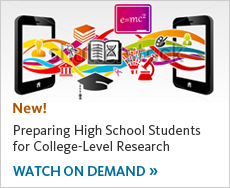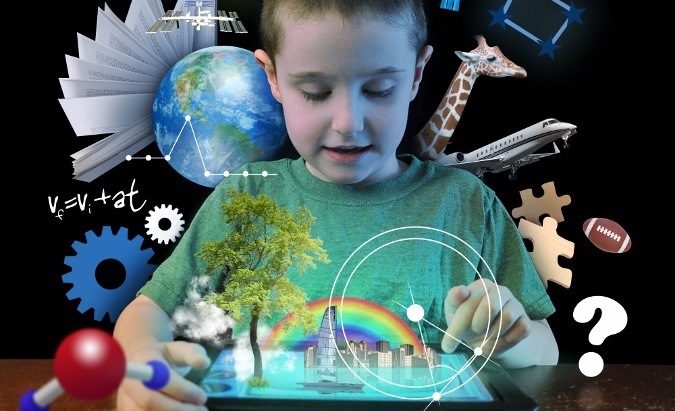By Lauren Newman, Library, Media, and Technology Specialist, Northern Burlington County Regional Middle School
Google is amazing, isn’t it? What did we do before its cultural proliferation? As a veteran middle school media specialist, I accept that none of my students remember a world without Google because they were not alive to experience it. However, I also know that Google can’t always satisfy one’s needs. I understand how much more information is out there that is inaccessible to Google. I have been trained on databases and the “invisible web.” I value what else I can find from authoritative, reputable sources. My students, well, they’re a different story.

Recently, EasyBib conducted an analysis of information literacy surveys, concluding that of the 1,200 librarians surveyed, “About 60% of librarians said that, overall, their students use the Open Web very often or all of the time” (Cloyd). Furthermore, of the 10,000 students surveyed, “58.7%…say that they go to Google over anything else” (Cloyd). This is not terribly surprising as it echoes what I see on a daily basis, not just with my students, but with other teachers as well.
How do we get a generation of students who have never known a world without Google to explore other sources? They need to be taught the benefits. Be prepared because there is bound to be some initial resistance from students, and potentially teachers too. Taking the time from content instruction to teach search tools may be a hard sell for some teachers, especially with packed curricula. However, these are the tools students will need to know how to successfully use in high school, college, and yes, out in the “real world.” Selling the benefits is key to successful integration of database instruction.
For example, the students in my school research many biographies: inspirational individuals, authors, famous orators, and historical figures, to name a few. Although there are some worthy websites out there dedicated to biographies, they often aren’t enough to satisfy the requirements set by our teachers. Because of this, our school has been a subscriber of Gale products, and Biography in Context (BIC) in particular, for many years now and it has truly made a positive impact on student research. Not only has the quality of their sources improved, but their comprehension of what they read and the quality of essays and projects stemming from their research has improved dramatically as well.
When I first introduce sources like BIC, I make a big deal of describing to students how databases are different than websites. We talk about authority, accessibility, and the sheer variety of articles available to them. I make sure to point out that even though we’re online and there is a URL, it doesn’t mean we’re looking at a website. I drill into them the idea that from outside of school, they need a password to access this information; it is special and not everyone in the world has access to it. This is a hard concept for them to grasp because up until this stage in their education, they’ve mostly used two kinds of sources, print books and websites. I tell my students that as they get older, teachers will be expecting more from them, and that they should expect more from themselves.
 I always start with a screencast I created showing students how to access and navigate the database. I then model the steps on the SMARTBoard and encourage students to come up to try the features. Students learn how to filter results, how to check for readability, how to highlight, and how to use the read-aloud feature.
I always start with a screencast I created showing students how to access and navigate the database. I then model the steps on the SMARTBoard and encourage students to come up to try the features. Students learn how to filter results, how to check for readability, how to highlight, and how to use the read-aloud feature.
It may be a tough sell at first; Google is easy, after all, and they know exactly how to find it. But once students see the quality of results they get, the sources from all over the world that are in the palms of their hands, they slowly begin to warm up. The clincher? Because BIC articles are all already cited in MLA format, my students are able to copy and paste those citations into EasyBib to become part of their works cited.
Overall, while there is nothing wrong with the open web, it should not be the only type of source explored. For certain assignments, a specialized database can be key.
Reference
Cloyd, A. (2014, September 17). How Often Do Students Use the Open Web for Research? Retrieved November 25, 2014, from http://goo.gl/zJwXye
[alert-info]
About the Author
Lauren Newman is a library, media, and technology specialist at Northern Burlington County Regional Middle School in Columbus, NJ. She is an Google Education Trainer and is working on becoming a Google Certified Teacher. Finding ways to meaningfully integrate technology into instruction and teaching information literacy skills are two of her favorite teaching activities. When she is not teaching or training others, she is most definitely reading, making screencasts, or playing with her rescue Cattledog mix, Tango. You can find Lauren online on Twitter @NewmansLibrary or on her blog at NinjaTeaching.com.
[/alert-info]



Dependance on Google is becoming more and more terrible. We should diversify.